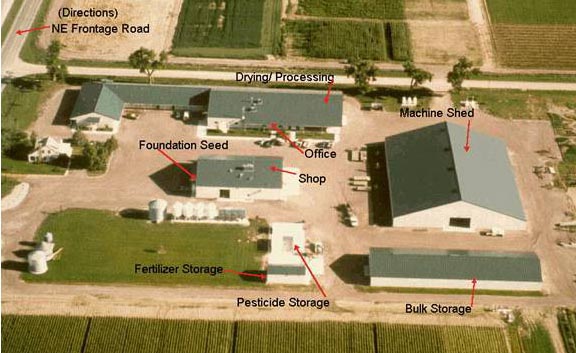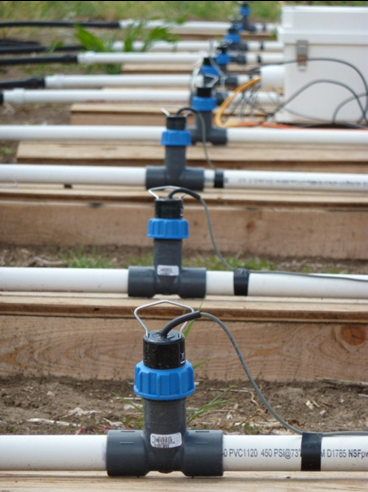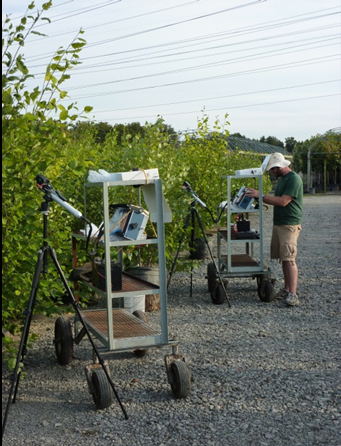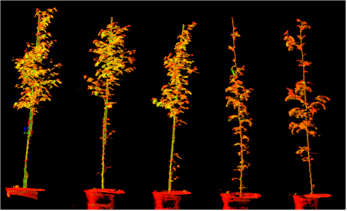You are here
Colorado State
 Dr. Bauerle has established a local research site at The Agricultural Research, Development and Education Center of Colorado State University, in Fort Collins.
Dr. Bauerle has established a local research site at The Agricultural Research, Development and Education Center of Colorado State University, in Fort Collins.
In spring of 2010, a 100-socket, 57-L, pot-in-pot research plot was installed at our macro-scale replicate research site (research station pictured at right)
 Research Site Details:
Research Site Details:
Ten replicate trees of ten commercially popular tree species were installed and connected to a pressure regulated micro-spray emitter irrigation system.
Each of the ten species were irrigated separately and irrigation was measured per species with in-line paddlewheel flow meters (pictured at right) connected to a Campbell CR 1000x data logger.
Trees were fertilized once in May with a 19-6-12 timed-release fertilizer. Meteorological data was continuously measured, averaged over a five minute period and logged using Decagon EM50R nodes.

Research Objectives:
Throughout the growing season, the ten species were used for supplemental acquisition of gas exchange data (details described in Willoway section) to quantify parameters used in a three-dimensional, spatially-explicit, canopy transpiration model (MAESTRA).
These parameters include measurements of enzyme limitations to photosynthetic rates, dark respiration, and photosynthetic response to changes in temperature and vapor pressure deficit. We also used this plot to implement a three-dimensional array of soil moisture sensors.
We installed four DEcagon 5TM soil moisture sensors at 20, 40 and 60 cm depths from the soil surface, one in each of the four cardinal directions (n = 12 sensors per container).

The data from these sensors is being used to model the movement and distribution of soil moisture within the nursery container using a species specific spatially explicit substrate moisture model (HYDRUS-3D).
Light detection and ranging (LiDAR) scanner was deployed over the course of the season to remotely measure individual tree dimensional characteristics (e.g. leaf area, height, and caliper) of the trees.
